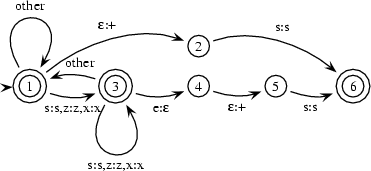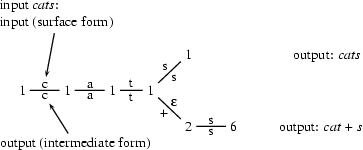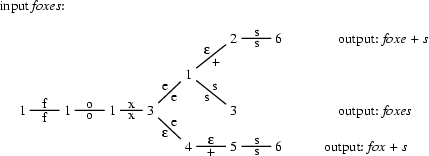2.3.3 From the Surface to the Intermediate Form
To do morphological parsing this transducer has to map from the surface form to the intermediate form.
To do morphological parsing this transducer has to map from the surface form to the intermediate form. For now, we just want to cover the cases of English singular and plural nouns that we have seen above. This means that the transducer may or may not insert a morpheme boundary if the word ends in s. There may be singular words that end in s (e.g. kiss). That's why we don't want to make the insertion of a morpheme boundary obligatory. If the word ends in ses, xes or zes, it may furthermore delete the e when introducing a morpheme boundary. Here is a transducer that does this. The ``other'' arc in this transducer stands for a transition that maps all symbols except for s, z, x to themselves.

Let's see how this transducer deals with some of our examples. The following graphs show the possible sequences of states that the transducer can go through given the surface forms cats and foxes as input.

